The Other Life of Objects
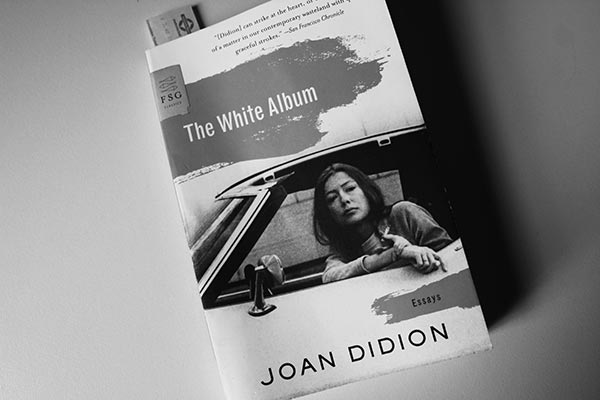
I have just finished reading The White Album — a book of mainly 70s essays by the US writer Joan Didion — and I’m feeling inadequate, or more to the point, pointless. Didion seems to get to her own point by the sparest means, and with language that is, as The New York Times Book Review says, “subtly musical in its phrasing and exact”.
In one essay, At the Dam, she recounts a second visit to the Hoover Dam where her guide from the Bureau of Reclamation invites her to touch one of the turbines.
We watched a hundred-ton steel shaft plunging down to that place where the water was. And finally we got down to that place where the water was, where the water sucked out of Lake Mead roared through thirty-foot penstocks and then into thirteen-foot penstocks and finally into the turbines themselves. “Touch it,” the Reclamation said, and I did, and for a long time I just stood there with my hands on the turbine. It was a peculiar moment, but so explicit as to suggest nothing beyond itself.*
Didion became fixated on the idea of the dam after her first visit in 1967, seeing images of its concrete face and transmission towers, spillways and tailraces through her inner eye in the most unlikely places, and wondering why the place was so affecting. Affecting, beyond the usual emotions that these vast monuments to achievement and lost lives have provoked; that have led to stock phrases (they made the desert bloom) or heroic artworks (bronzes of muscular citizens clutching sheaves of wheat). On the second visit the Reclamation man explains a marble star map, then afterwards, out in the desert towards sunset, Didion begins to understand the cause of her fixation.
I walked across the marble star map that traces a sidereal revolution of the equinox and fixes forever, the Reclamation man told me, for all time and for all people who can read the stars, the date the dam was dedicated. The star map was, he had said, for when we were all gone and the dam was left. I had not thought much of it when he had said it, but I thought of it then, with the wind whining and the sun dropping behind a mesa with the finality of a sunset in space. Of course that was the image I had seen always, seen it without quite realising what I saw, a dynamo finally free of man, splendid at last in its absolute isolation, transmitting power and releasing water to a world where no one is.
It is possible but not always easy to sense this other life of objects; a condition of things that is beyond metaphor and message, and in peculiar moments — perhaps as a type of disengagement with their accretions of meaning — sense them as things at least partly free of human points of reference and symbolism. Can objects be disinterpreted? I think never. Only by the annihilation of the thinkers. The object needs our absence to bring its other life to fullness.
Didion’s massive, roaring dynamo, still transmitting power and releasing water to a world empty of humans is a thought, in its vastness and finality, sublime. In the absence of people this thing will become nameless, unthought of, unthinkable, and finally being (no longer suggesting) nothing beyond itself.
Notes
Joan Didion *
The White Album
Farrar, Straus and Giroux, 2009
Essay: The Dam, 1970
The Other Life of Objects is taken from Undefinable Places In-between — a series of short essays I have written and continue to write under that title.
No Runtime
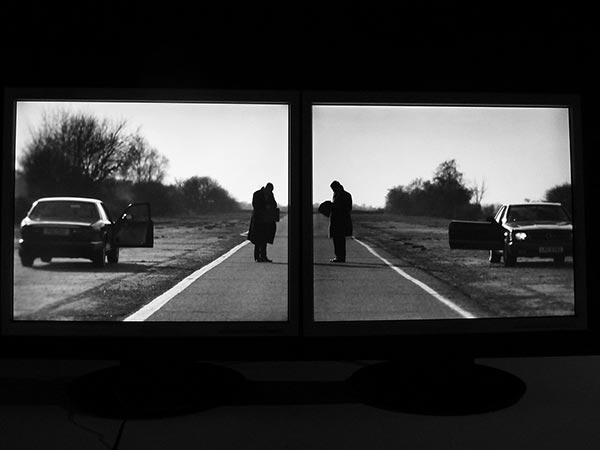
What we think of as the present, is no more than that: a thought, an idea; or a formless, timeless, undefinable, unfixed, unfilled state of in-betweenness. A point of transition. A flick-switch between past and future.
It may seem like a small movie—each spectral frame a memory from the immediate past or an imagining for the immediate future, providing an illusion of sequential time passing, but the present has no start, no finish, no runtime. The runtime version of the present is an imaginary construction; a narrative, because memory is a narrative — a visit to the past through imagination — not a recording, not a movie.
The present contains no story. Nothing happens in the present because there is no ‘in’. The present can only be inadequately placed through stories that will never fit: the present is me pouring a cup of tea: the present is a glimpse of a red letterbox as I turn a corner in the street. All of these perceptions of the present are really constructions through which the instant of the present has been extended by adding a past and future to either side of the point of transition.
As elusive as the present may be, there are instances when this point of unfilled in-betweenness may be experienced in itself — or for itself. Suddenly you’re not looking at the movie. You’re inside the experience and outside time. The present is still a point of transition —no longer, however, between past and future, but between a viewer and an image, a listener and a piece of music, a stroller and a landscape, a reader and a text.
A haiku can do this: pluck the reader from the flow of time and dissolve this narrative view of the present. This is a point of stillness where past and future fall away, narrative time disappears, the reader and the words vanish, and there is only the present — an in-between place of absolute nowness.
Notes
Picture: If We Never Meet Again,
Two channel video, Noam Toran, (2010).
No Runtime is taken from Undefinable Places In-between — a series of short essays I have written and continue to write under that title.
Right to Shop
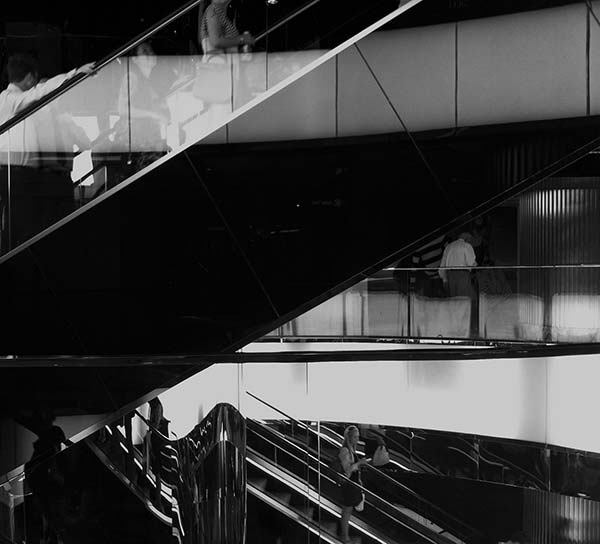
There are many explanations for why we shop. That is, shopping for reasons beyond satisfying fundamental requirements like the need stay out of the rain or postpone death by eating.
In the better funded phases of my life I often took comfort from this one: I shop because it’s something I can get right.
Over one lifetime we take on all manner of tasks. We try to be more attractive to certain people, we go through agonies of self doubt, begin countless dead-end ventures, fret about our careers, become anxious about what we think we can and can’t achieve—and we often fail.
But shopping is easy. All it takes is desire and money. So long as we have the wish and the wherewithal we can achieve success—guaranteed—in minutes or seconds. No brick walls. No self doubt or agonising over consequences or worrying whether or not we have the talent or genetic raw material for it.
It is difficult to fail when shopping.
Notes
“It’s a hard place to run in to for a pair of stockings,” a friend complained to me recently of Ala Moana, and I knew that she was not yet ready to surrender her ego to the idea of the center. The last time I went to Ala Moana it was to buy The New York Times. Because The New York Times was not in, I sat on the mall for a while and ate caramel corn. In the end I bought not The New York Times at all but two straw hats at Liberty House, four bottles of nail enamel at Woolworth’s, and a toaster, on sale at Sears. In the literature of shopping centers these would be described as impulse purchases, but the impulse here was obscure. I do not wear hats, nor do I like caramel corn. I do not use nail enamel. Yet flying back across the Pacific I regretted only the toaster.
Joan Didion,
On the Mall, 1975.
Picture: Westfield, Sydney.
Photo: GS
Right to Shop is taken from Undefinable Places In-between — a series of short essays I have written and continue to write under that title.
All is Rosy
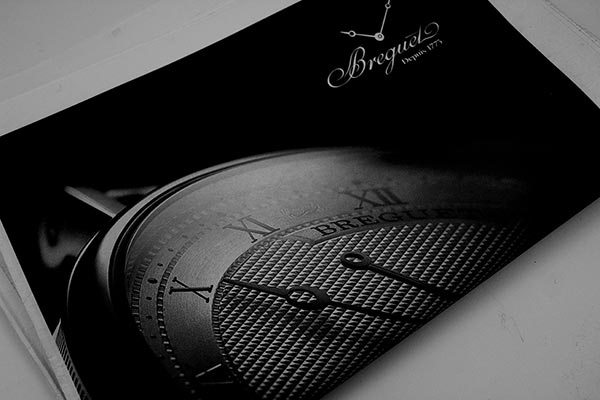
Commercial messages work on us on various levels.
Regarding one level, we have grown up with advertising and we understand that rosy claims are crafted by people who get paid for it—whether they believe it or not. The rosy claim is a given. People understand the idea of shades of truth and truths (or lies) in context.
On another level, on some mysterious other-plane of consciousness, the rosy claim is assimilated and believed. There is a belief that the purchase will magically change our lives.
Of course the magic can be explained away as messages that appeal to deep needs and fears—the need to be loved or found attractive, the need to at least appear to be successful, the need to fulfil powerful obligations, the need to be part of something greater—but there is also an element operating here that is more aligned to a type of enchantment than psychological drives.
One presumes that if enchantment is happening then some type of entity is doing the enchanting — casting the spell. But it is not just the advertiser, or an ad agency creative team or a marketing strategist or a brand influencing blogger who creates the allure through well crafted messages and imagery, but also the products themselves. Even if the spin were somehow subtracted from the equation, the shiny car, the artfully prepared restaurant meal, the jacket, the jeans, the table, the chair, the kitchen blender, radiate some type of primal, fetishistic “come hither” that goes beyond being an aid to self image.
The enchantment can also be explained away as effective product design: the curves and colours, textures, weight, whatever—that makes a thing with a price tag sexy or must-have. The entity creating the enchantment could be, say, an industrial designer, or a product designer or a fashion designer. But this still doesn’t completely account for the allure. This type of product design is also part of the marketing message; the spin.
Something even beyond all of this is operating here.
With the same innocence and sense of wonder as a small kid holding up a string of plastic rubies to the sky and being charmed by the way the pink and crimson light is refracted so beautifully through its facets, we look at the car or the chair or the blender and we “get it”; that what we now have is a talisman with the transformative power to renew life—not by driving it or sitting on it or blending with it or looking at it or showing it to the world but merely by having it in our presence.
Back home from a day’s spending at the shopping precinct, you take the new jacket; drape it over the sofa. Place the new shoes nearby, still in the unlidded box with its crisp tissue paper. Next to the box, an exquisitely designed perfume bottle. Stand back and admire the arrangement. The coat. The shoes. The perfume. It looks like a magazine shoot. Sure. What you see is going to make you look more attractive and successful; and they are, in themselves, beautiful objects; but something else is happening. All three items are beaming their magic into some unfathomable place in your soul.
How else could we juggle the two states of mind simultaneously? Not believing and believing at the same time.
Notes
Picture: Watch advertisement.
Photo: GS.
All is Rosy is taken from Undefinable Places In-between — a series of short essays I have written and continue to write under that title.
Stillness
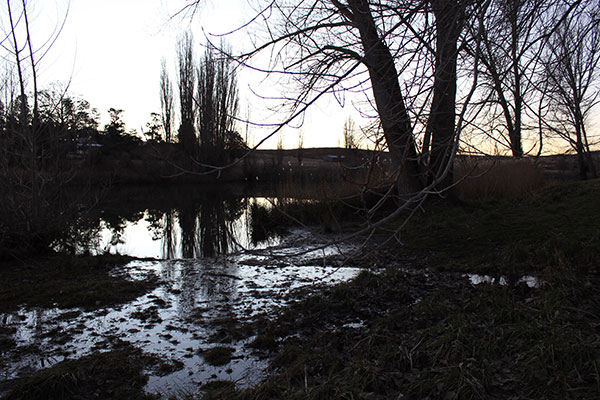
While light space is eliminated by the materiality of objects, darkness is ‘filled’, it touches the individual directly, envelopes him, penetrates him, and even passes through him: hence ‘the ego is permeable for darkness while it is not so for light’; the feeling of mystery that one experiences at night would not come from anything else.
Jacky Bowring, A Field Guide to Melancholy
The river in winter is a poetic transmitter. Particularly at nightfall — as a liminal place of melancholic beauty and stillness as much as a time of transition. Bowring talks about sites of spirited sadness that have the ability to slow things down, defamiliarise, allow for percolation, and facilitate ‘solitude and solice for imagination.’
Photography, GS, Snowy River at Dalgety, New South Wales
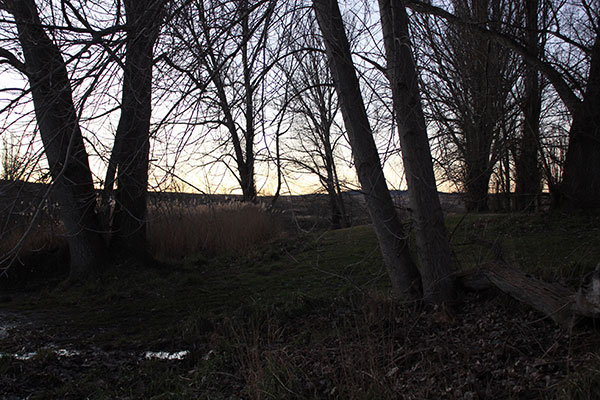
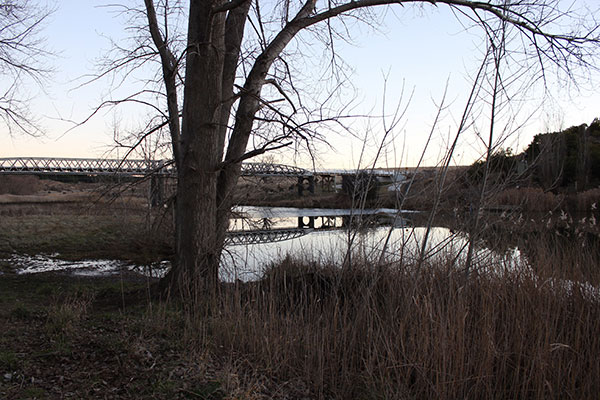
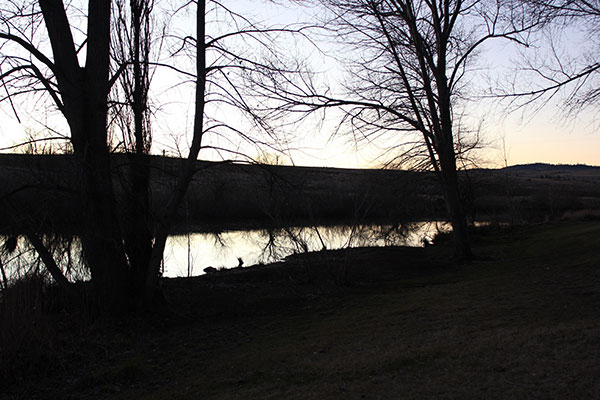
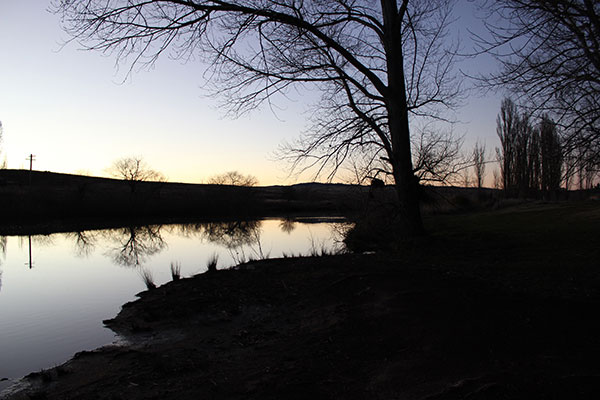
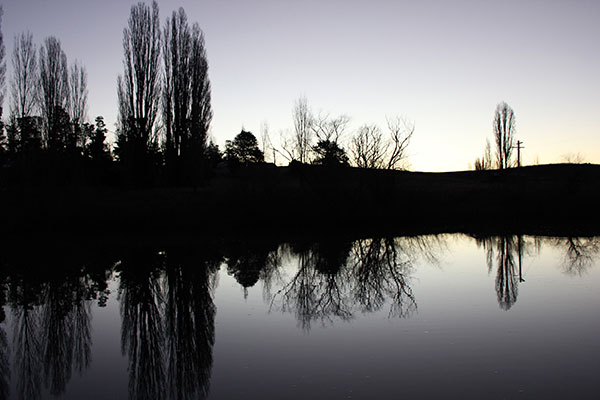
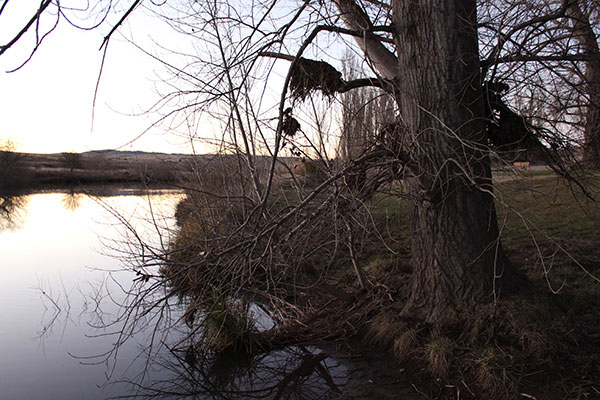
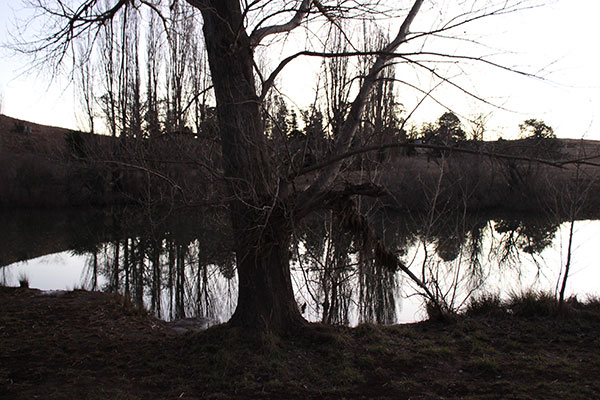
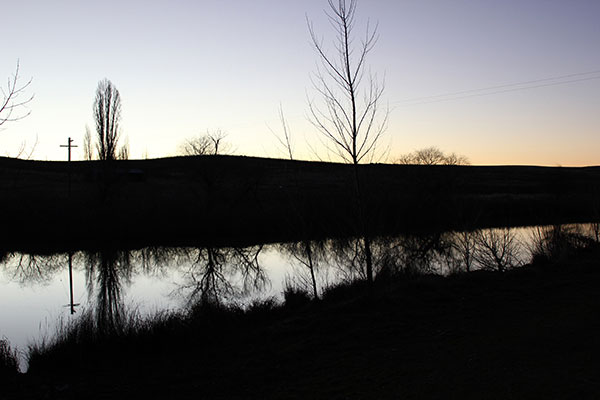
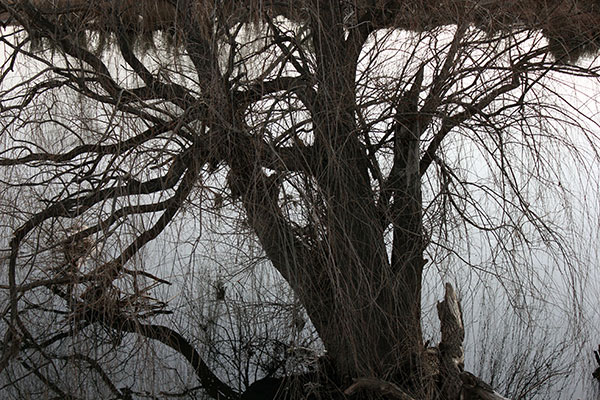
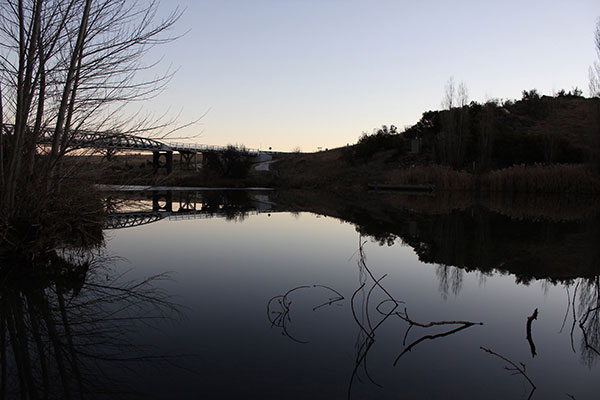
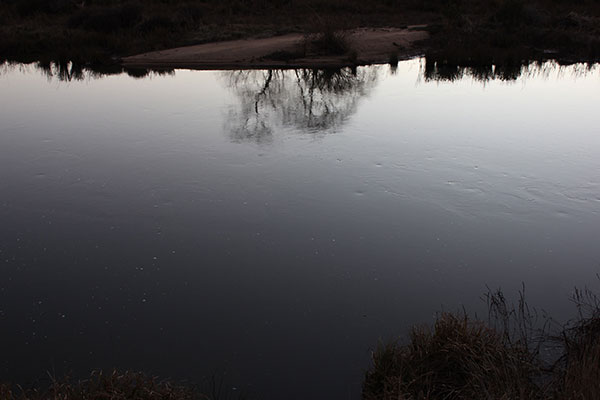 x
x
Paths of Desire
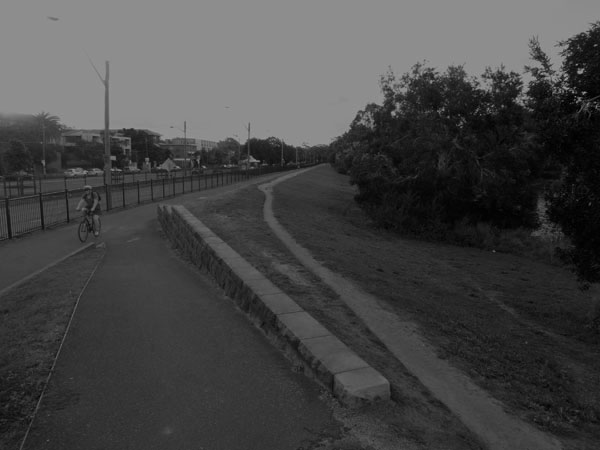
Paths of Desire is taken from Undefinable Places In-between — a series of short essays I have written, and continue to write, under that title.
Paths of Desire
Except for those clues that surface into what we think of as the present — to be noted, recorded or assigned to memory, interpreted, interpolated, and built into a trace or echo of what was, or may have been, the past is a place that may never have happened. At best, history is a narrative, imagined into the gaps between the findings we take as evidence.
Can there be any more powerful connector to what went before, than that vast mass of evidence that will never be found, never brought into the light of enquiring minds, not even imagined?
The statement above sits somewhere between a question and an appeal — for something extra to surface as evidence, to reveal that there are other types of connectors; because this is the nature of human nature: the desire to travel outside of common logic, and beyond the experience of one life, and one’s time, and what one lifetime can learn.
While much has been learned and recorded about the post-colonial history of Sydney’s Centennial Parklands, little has been gathered about the lives of the people who went before: the ones who lived there over the 50,000 years before 1788.
* * *
Gehry in Sydney
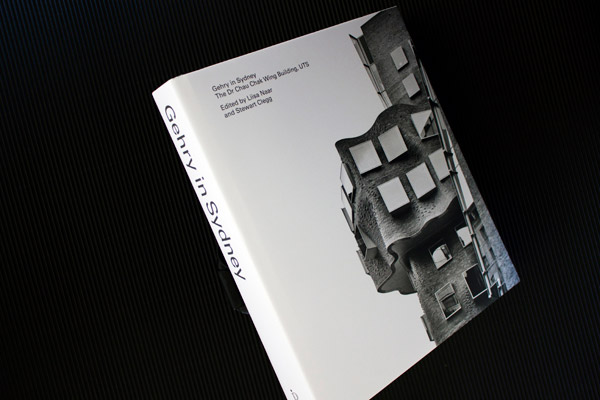
Just out: a book I have been working on with managing editor Liisa Naar for UTS. Gehry in Sydney is about a recent UTS building project. The university commissioned US architect Frank Gehry (Guggenheim Museum Bilbao) to design the Dr Chau Chak Wing building for their business school in Ultimo, Sydney.
Most graphic designers of print are familiar with the anxiety attached to making decisions (other peoples’ more than theirs, I think) on what to put on the cover of a publication. So much risk—for some—seems to ride on the choice and positioning of the elements, and often what one finishes up with is a conceptually deficient, consensus-built assemblage that misses the mark in relation to all the writing and the image-making and the thinking that may be found inside. Cover photography is particularly vulnerable to the pressures applied to designers by these nervous guardians of the book’s public acceptability. Predictable images rule.
Working with a more enlightened client, I was delighted when this one turned out to be an exception. Many city buildings (some of them deservedly) become targets for the ‘icon shot’ style of documentation: dramatic, forced-perspective, hard-edged verticals thrusting up into the purest of blue skies suggesting… the predictable. To me, Gehry’s building embodies a less invasive, more personal type of seduction (if ‘seduction’ it is) and in this it has much going for it as a visual experience.
On walking around the site I found that the building’s beautiful shapes, textures and rhythms could be enjoyed from within a smaller frame of viewing and often, just square-on, or close to it, from a higher observation point with less perspective — such as the elevated walkway opposite. From there you can appreciate the pattern of the brickwork and its earthy textures, and the almost musical compositions of square, box-framed windows against those ‘impossible’ curves. Michael Nicholson’s crisp monochrome photographs capture this with quietness, and zero swagger: the visual poetry in brick that will live on, possibly beyond the career span of its world famous designer.
Gehry in Sydney
The Dr Chau Chak Wing Building, UTS
Edited by Liisa Naar and Stewart Clegg
Cover design and book concept design by Graeme Smith
Cover photography by Michael Nicholson
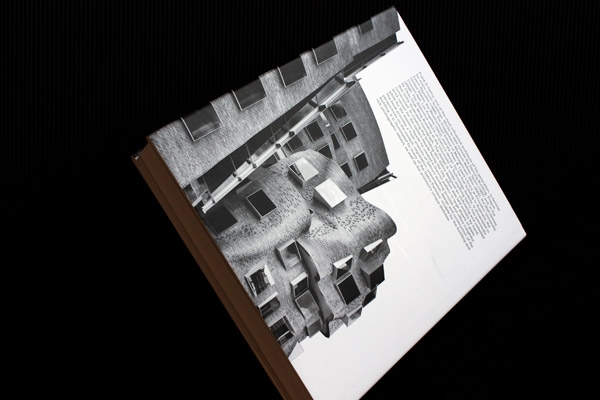
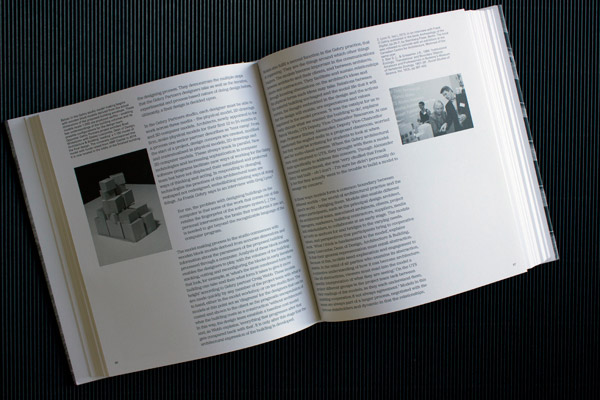
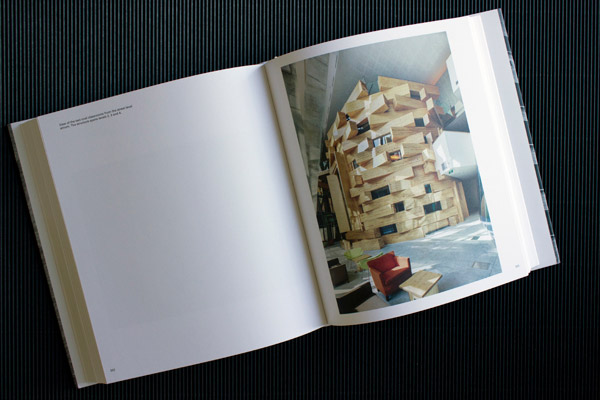
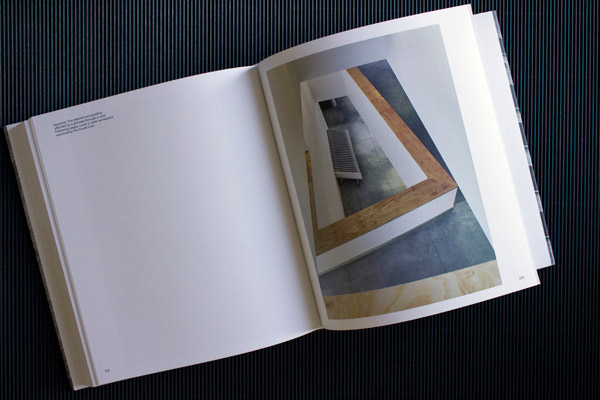
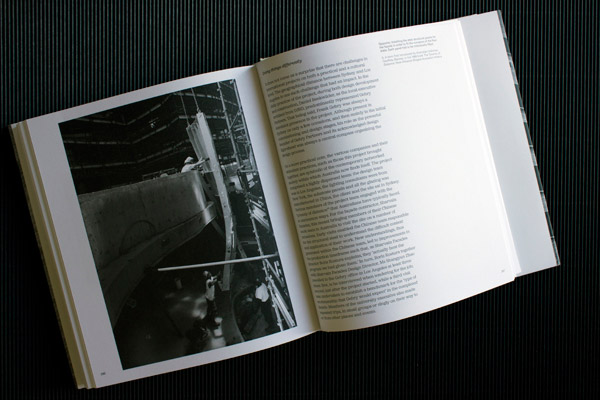
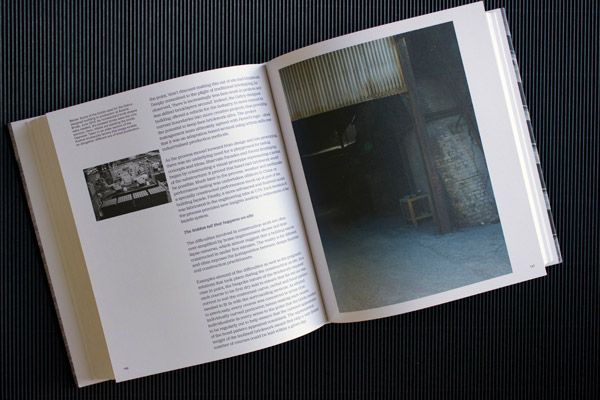
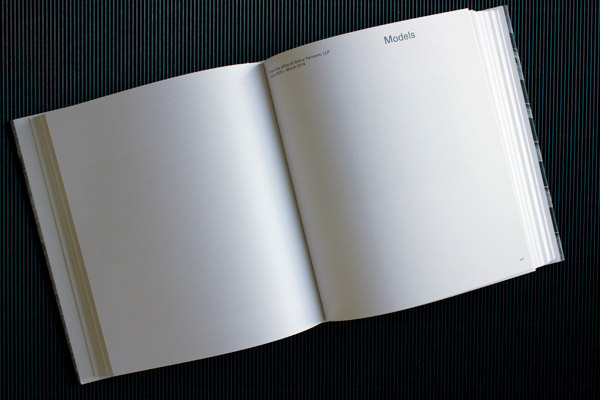
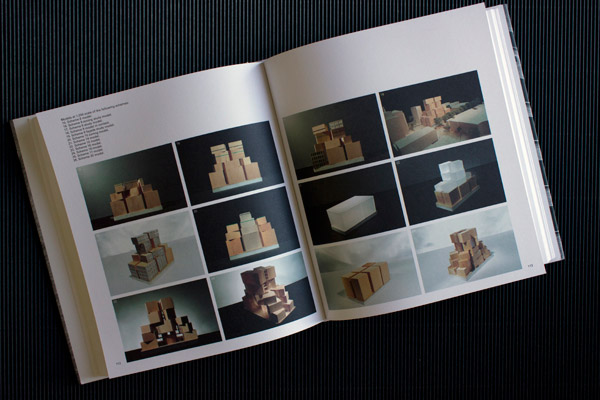
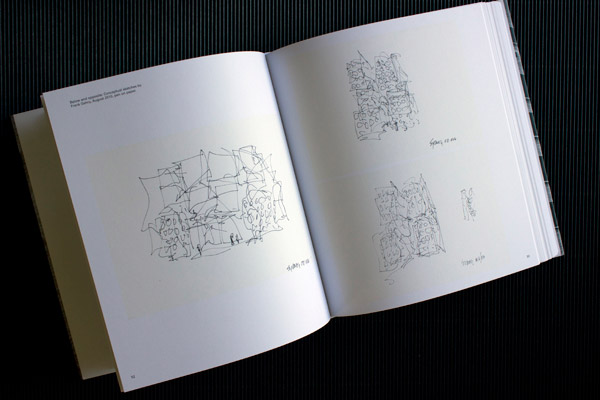
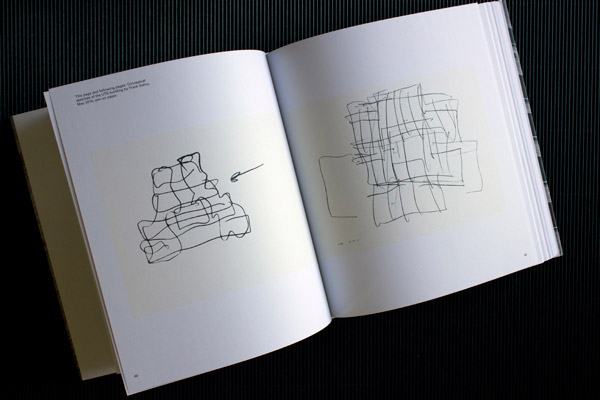
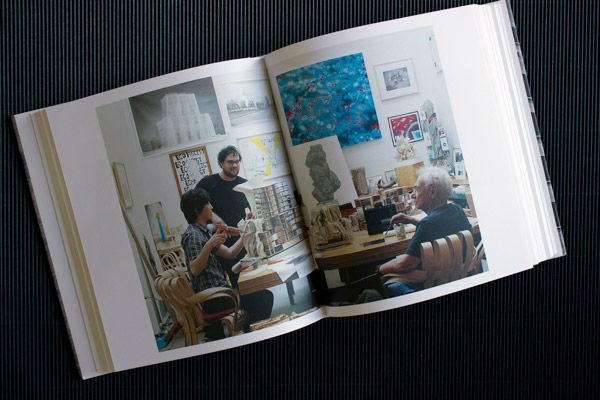
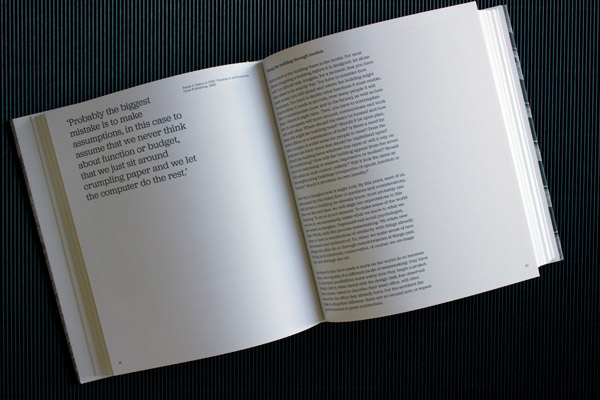
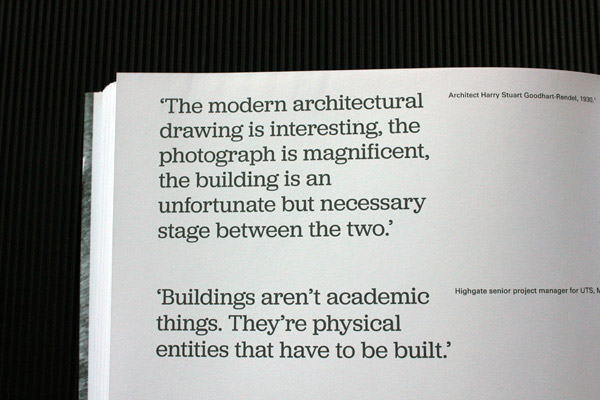
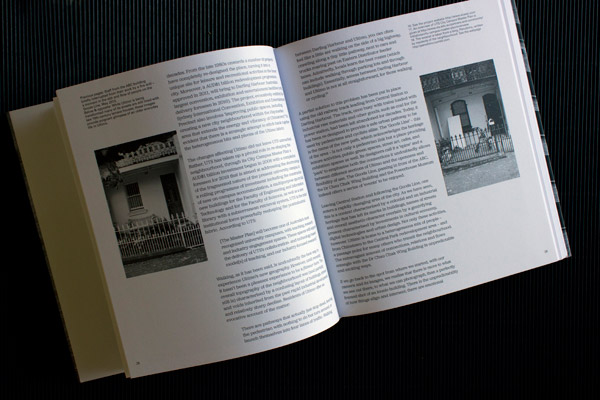
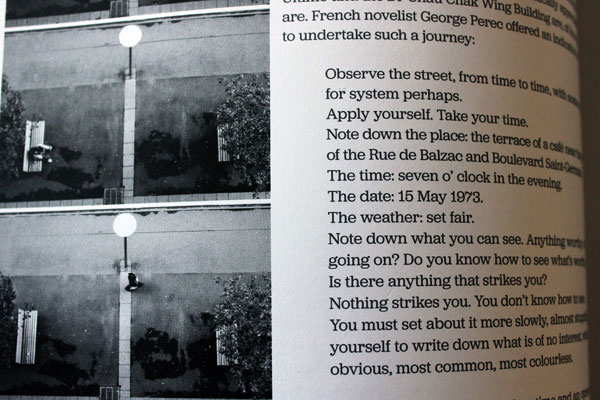
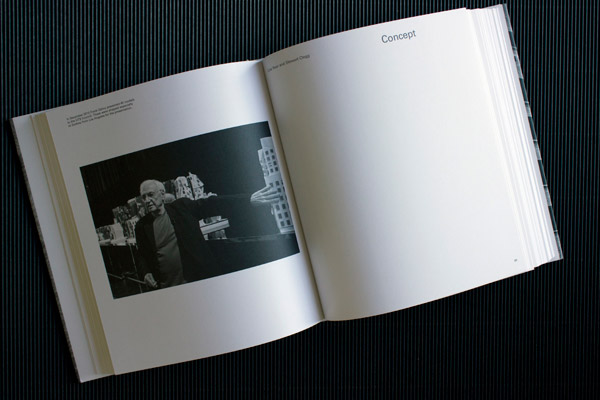
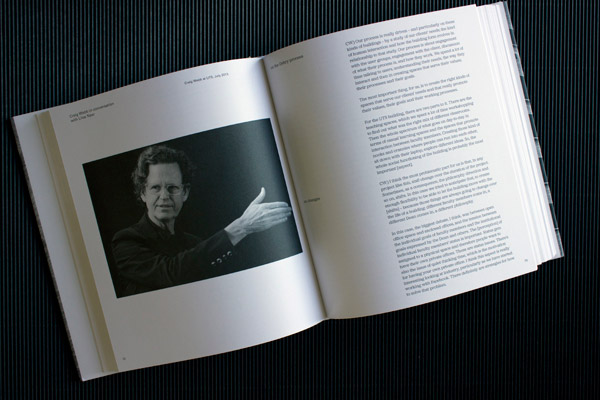
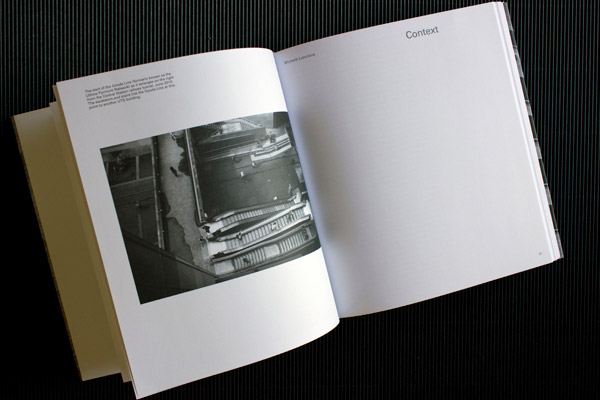
x
Riverine
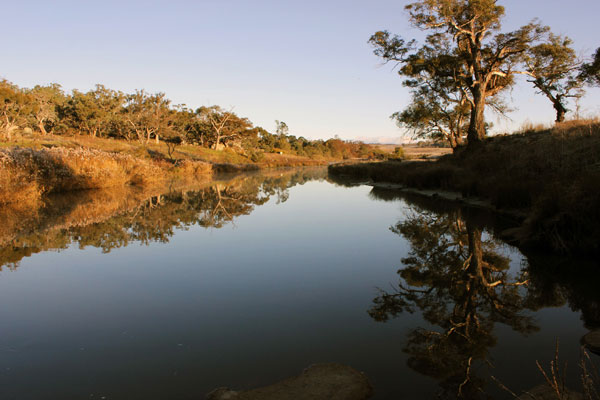
What a pleasure it is to live somewhere with a river running through the backyard. First, at a friend’s house in Maffra, New South Wales. Second, at a cottage in nearby Dalgety. In both places it’s the Snowy that flows just a few minutes from my makeshift workstation; I am working. For those who know me and have my number and email: please stay in touch.

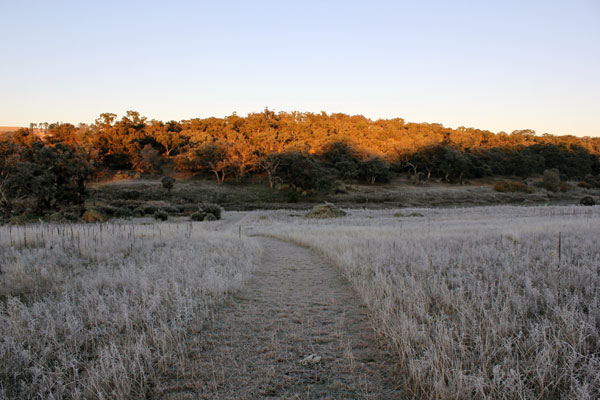
Above: Maffra. Below: Dalgety.
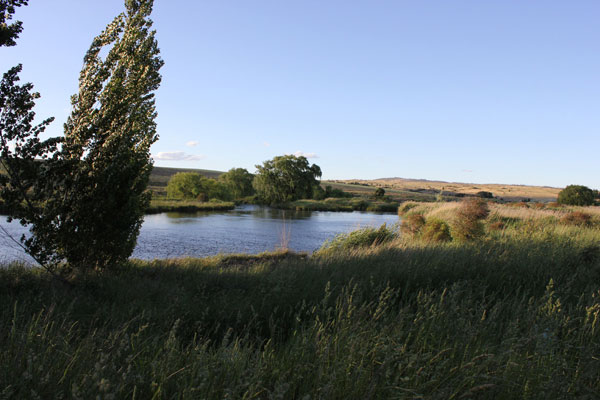
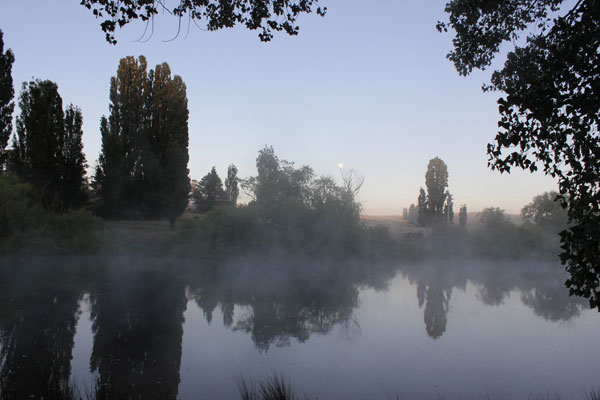
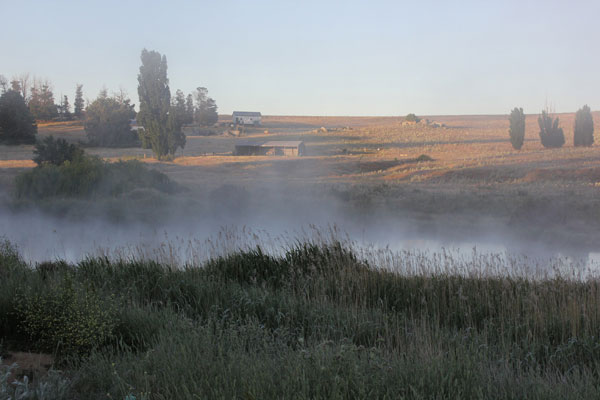
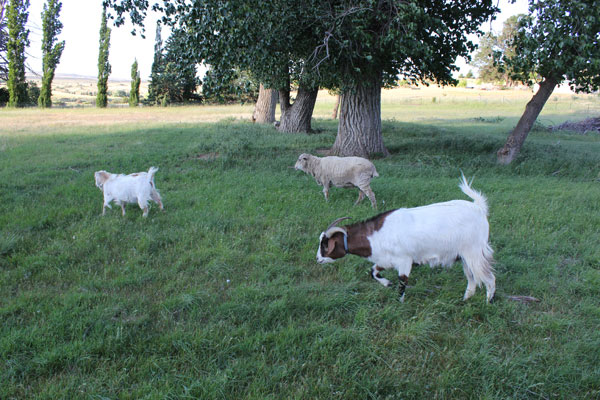
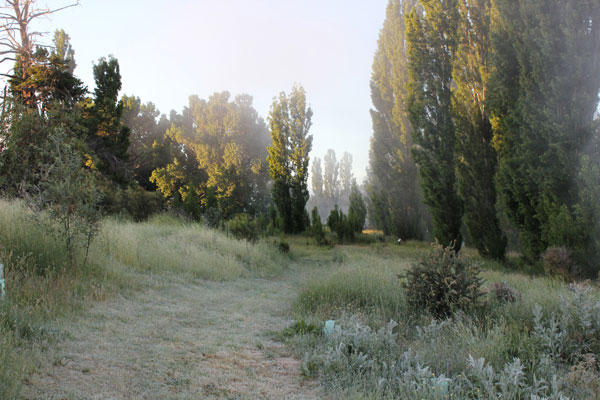
x
Mask
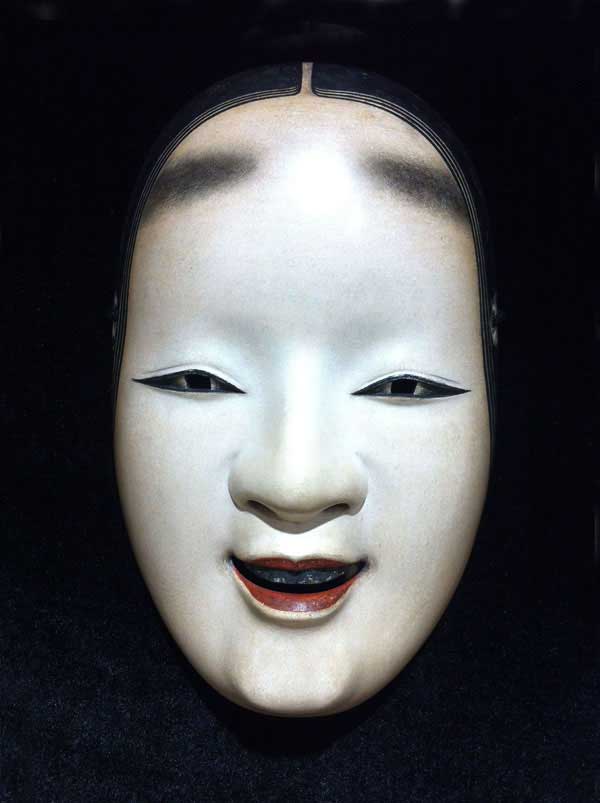 Noh masks by Hideta Kitazawa
Noh masks by Hideta Kitazawa
Shadow & Light
The Japan Foundation Gallery
L4 Central Park, 28 Broadway, Sydney
16–30 September
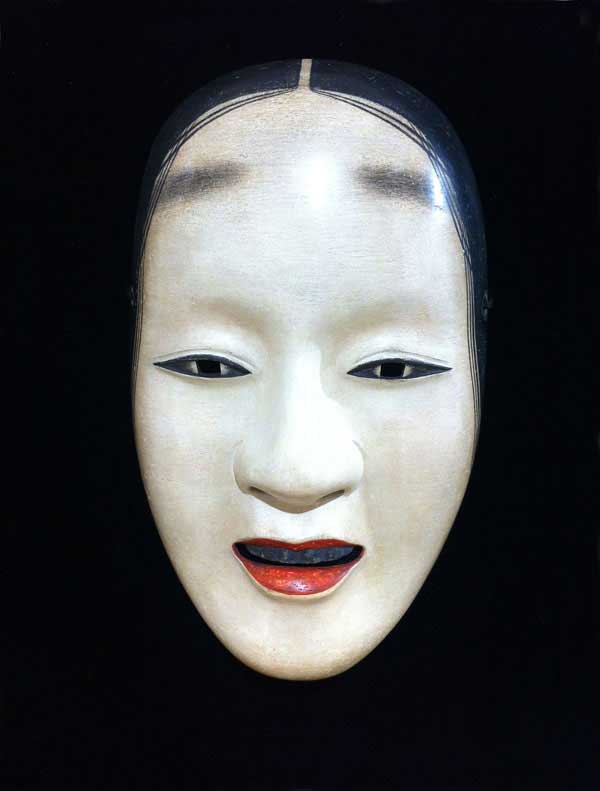 x
x

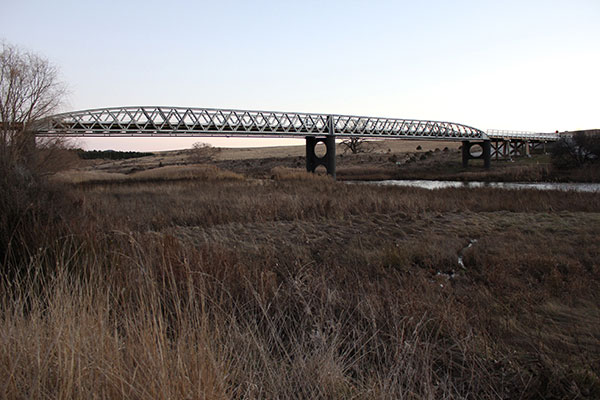 The elegant lines of Dalgety Bridge, Snowy River, New South Wales.
The elegant lines of Dalgety Bridge, Snowy River, New South Wales.